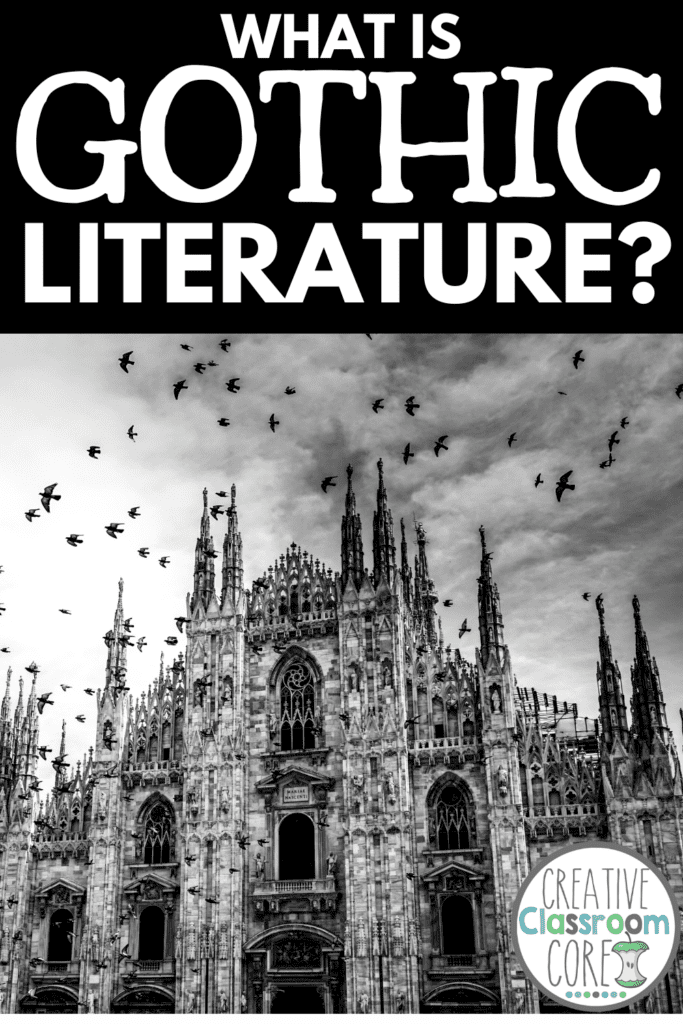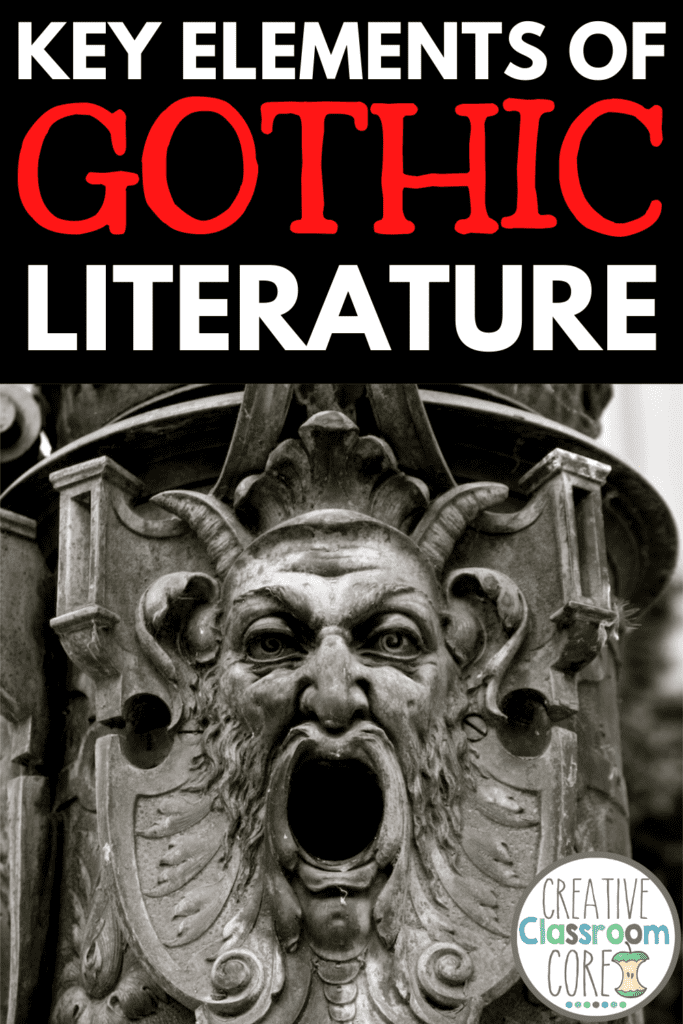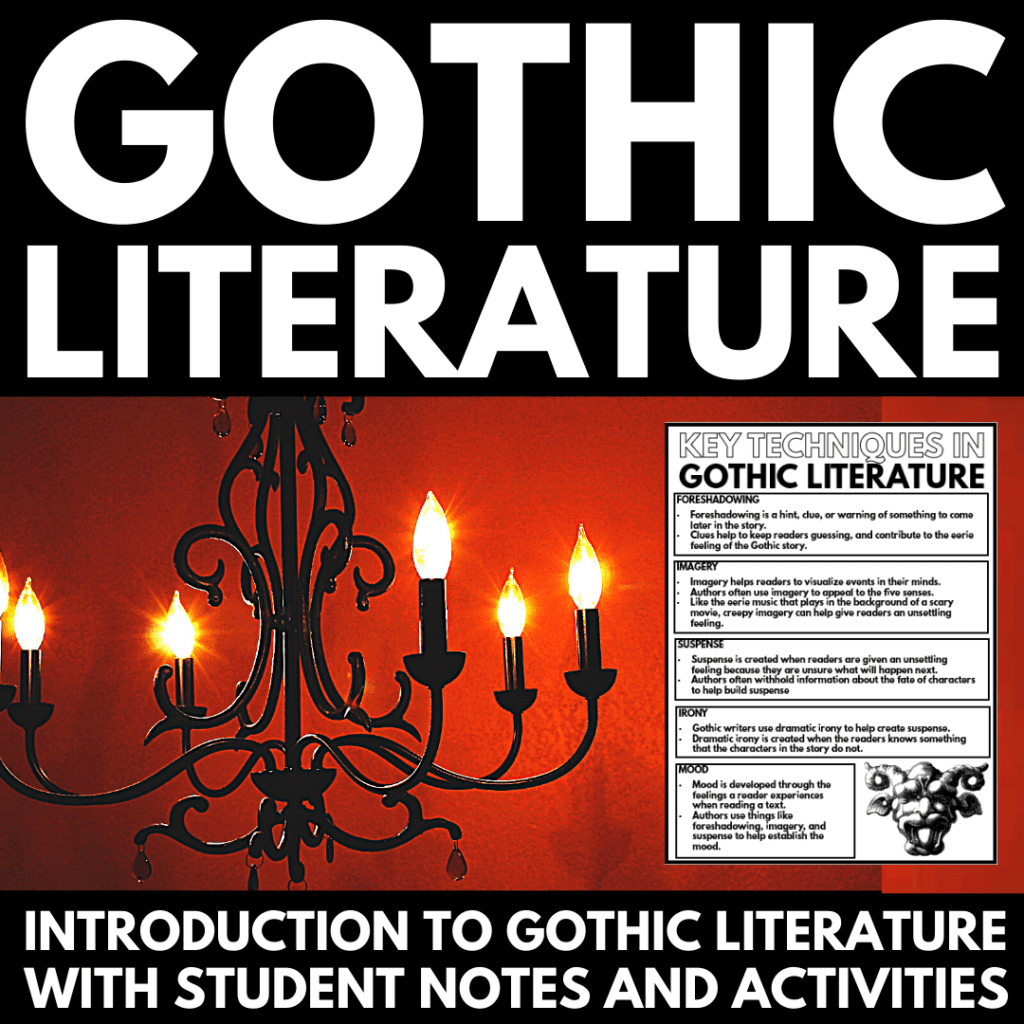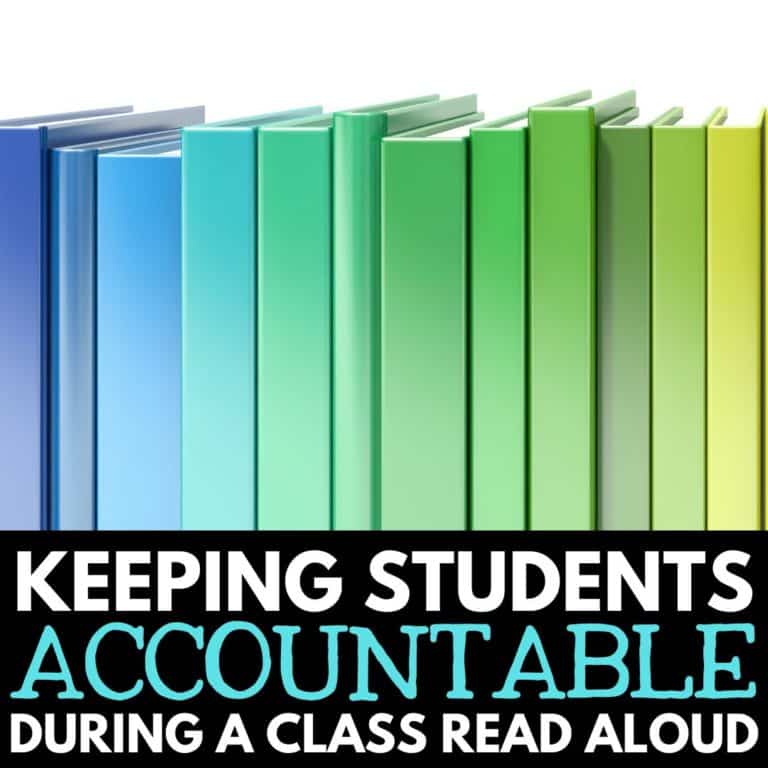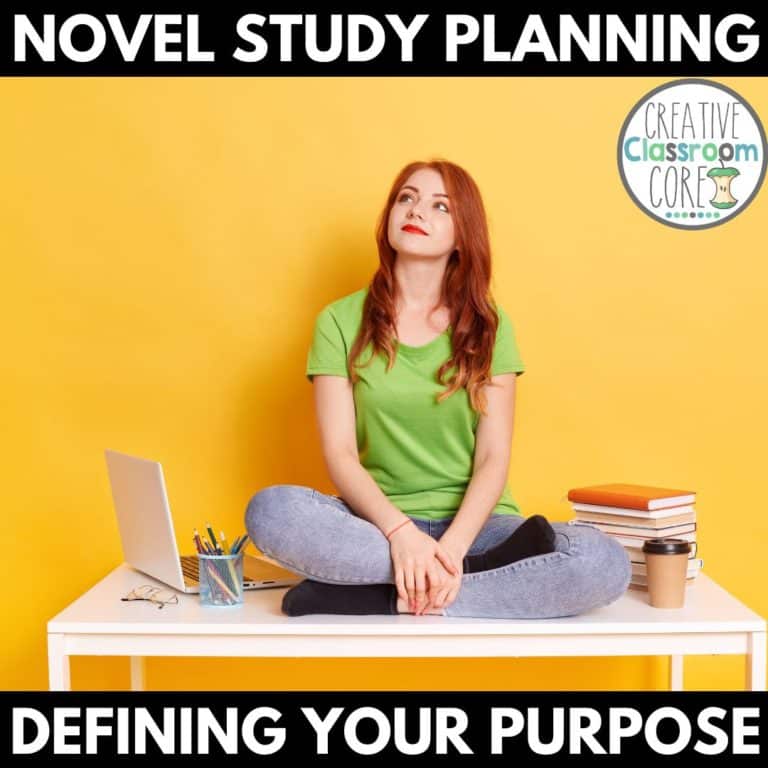What is gothic literature?
By MARISSA DESPINS Updated April 04, 2024
Those of you who have been following along with this blog for a while know that creepy short stories are definitely my jam. These stories are hits with my middle school learners. They have just enough spookiness to draw in my reluctant readers. Today I will answer the all important question – What is Gothic Literature? In addition, I will share some ways you can incorporate this exciting genre into your own classroom instruction.
If you are looking for some no-prep activities to use alongside your next Gothic Literature unit, be sure to check out my TPT shop by clicking on the image or button below!
What is Gothic Literature?
What is Gothic Literature, anyway? This spooky genre combines aspects of the horror and romance genres. It is believed that the genre first began in England, with Horace Walpole’s The Castle of Otranto. This was published in 1764. It is considered to be the very first gothic novel.
Edgar Allan Poe is often referred to as the father of Gothic Literature in America. He was well known for writing horrifying and descriptive stories. One of his most popular stories, The Tell Tale Heart, was published in 1843.
If you are interested in teaching some lessons relating to the stories and poems of Edgar Allan Poe, you can check out my previous Poe posts here and here.
What are some Key Elements of Gothic Literature?
There are some certain characteristics that are present in this genre. When combined together, they create stories with moods that are creepy and ominous.
Elements of Gothic Literature #1 – Mysterious and Eerie Elements
The environment and atmosphere of a Gothic novel directly contributes to feelings of fear and uneasiness. Common settings include:
-Medieval style castles, mansions, or abbeys
-Dark forests
-Dismal, dark, and ruined scenery
-Graveyards
For a big list of creepy and eerie short stories, be sure to checkout our guide to Short Stories for Halloween!
Elements of Gothic Literature #2 – Supernatural Elements
Much of the allure of Gothic Literature comes from supernatural elements that help move the plot forward. Common supernatural elements include:
-Unexplained sights, sounds, or occurrences
-Inanimate objects coming to life
-Creatures like spirits, monsters, ghosts, and vampires
-Elements of superstition
If you love supernatural short stories as much as I do, you won’t want to miss out guide to using science fiction in the classroom!
Elements of Gothic Literature #3 – Romance
Many believe that Gothic Literature stemmed from Romantic Literature. The two genres have several overlapping characteristics. Romantic elements often found in Gothic Literature include:
-Passionate romances plagued by sorrow and tragedy
-Emotion favored over rationalism
-Frequent bouts of crying and screaming
-Spells of lust, anxiety, and hysteria
Elements of Gothic Literature #4 – Damsel in Distress
Women often face oppression in Gothic stories. Common elements of distressed damsels include:
-Women held captive in some way
-Tyrannical males who try to control
-Feelings of oppression, loneliness, and sadness
-Women driven to madness or rendered powerless
-Early Gothic novels featured women who were virginal
-Confining family units that women must escape from
Elements of Gothic Literature #5 – Feelings of Mystery and Fear
Suspense and fear are crucial elements of Gothic stories. Common elements include:
-Things beyond scientific understanding, which lend way to mystery
-Howling wind, thunder storms, and strange climactic conditions
-Flickering candles and other frightful concepts
How Can I Introduce Gothic Literature in my Classroom?
Now that we have answered the question of “What is Gothic Literature”, it is time to look at ways we can use this genre in our classrooms. I start my unit on Gothic Literature with an introduction to the genre. It is important for students to have a clear understanding of the elements of the genre. This way, they are able to pick out key characteristics when we read gothic stories.
First, I have my students take notes on key elements of gothic literature. Then, I have them keep the notes inside their short story notebooks. Because if this, they can refer back to their notes as they read.
Interested in snagging a copy of the Gothic Literature introduction activities I use with my learners? You can snag yourself a copy in my TPT shop by clicking here or on the image below.
Looking for a fun freebie to use with this spooky genre?
This FREE resource is a fun way to introduce Edgar Allan Poe to your students and answer the question of “What is Gothic Literature”. It includes an online research template so students can pop online and do some fact gathering about this spooky author. Click here or on the image below for instant access to your FREE copy!
Interested in signing up for my email list?
If you are interested in signing up for my email list, you can do so by clicking on the link below. I periodically send out emails with free resources, teaching tips, and exclusive deals. Signing up will also give you immediate access to some of my best selling Interactive Notebook resources. These include foldable activities, graphic organizers, and other fun activities.

